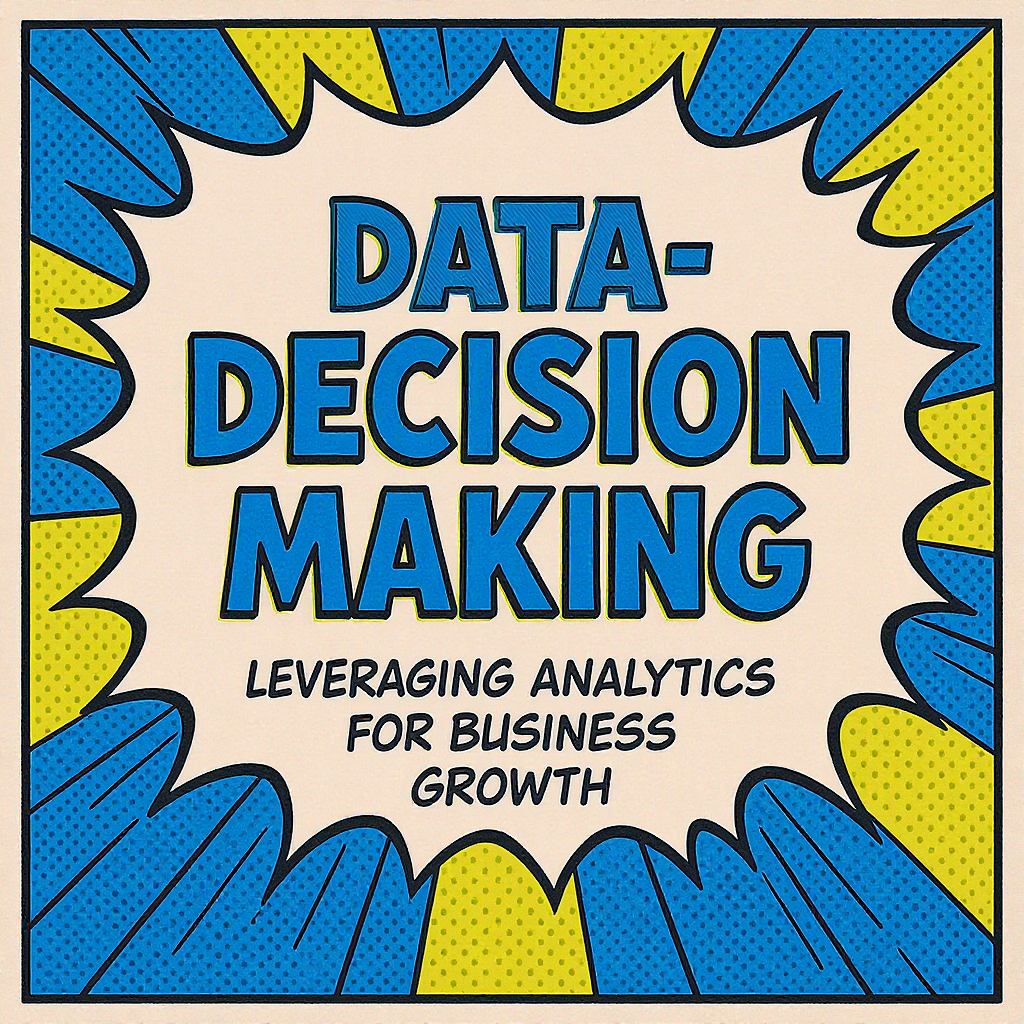In today’s rapidly evolving business landscape, making informed decisions is no longer a luxury but a necessity for survival and growth. This article explores the critical role of data-driven decision-making, highlighting how leveraging analytics can propel your business forward. We will delve into the process of collecting and analyzing relevant data, identifying key performance indicators (KPIs), and utilizing this information to optimize strategies, improve efficiency, and ultimately achieve sustainable growth. We will examine different analytical tools and techniques available, emphasizing the importance of a holistic approach that considers both quantitative and qualitative data. The power of data-driven decision-making lies in its ability to transform guesswork into informed strategies, reducing risks and maximizing returns on investment. Ultimately, we’ll demonstrate how embracing data-driven approaches can lead to a more agile, responsive, and ultimately more successful business.
Understanding Your Data Landscape
The foundation of effective data-driven decision-making rests on a thorough understanding of your data landscape. This involves identifying the various sources of data relevant to your business goals, such as website analytics, CRM systems, sales data, social media engagement, and customer feedback surveys. It is crucial to establish a clear framework for data collection, ensuring consistency and accuracy. This might involve implementing specific tracking tools, refining existing data capture processes, or integrating various data sources into a unified system. Once you have a comprehensive understanding of your data sources, you can begin to identify the key performance indicators (KPIs) that will guide your decision-making process. These KPIs will vary depending on your business objectives, but they should be measurable, actionable, and relevant to your overall strategy.
Key Performance Indicators and Data Visualization
Identifying the right KPIs is vital. For an e-commerce business, this might include conversion rates, average order value, customer acquisition cost, and return on ad spend. For a content-focused business, KPIs could include website traffic, bounce rate, time on site, and social media shares. Once you’ve selected your KPIs, effective data visualization is essential for interpreting the data and drawing actionable insights. Tools like Google Data Studio, Tableau, and Power BI offer powerful visualization capabilities, transforming raw data into easily understandable charts, graphs, and dashboards. These visualizations can highlight trends, patterns, and anomalies, enabling quicker identification of areas for improvement.
Analytical Tools and Techniques
The choice of analytical tools and techniques will depend on your specific needs and data complexity. For basic analysis, spreadsheet software like Excel or Google Sheets might suffice. However, for more complex analyses, specialized software such as statistical packages (R, SPSS) or business intelligence tools (Tableau, Power BI) may be necessary. Techniques like A/B testing, regression analysis, and cohort analysis can provide valuable insights into customer behavior, marketing campaign effectiveness, and other critical business aspects. Remember that choosing the right tools is as crucial as interpreting the results accurately; a wrong analysis can lead to flawed decisions.
Implementing Data-Driven Strategies and Continuous Improvement
The ultimate goal of data analysis is to inform strategic decision-making. Once you have identified key trends and patterns, translate this knowledge into actionable strategies. This could involve optimizing marketing campaigns, improving website user experience, enhancing product offerings, or refining internal processes. However, data-driven decision-making is not a one-time event. It’s an ongoing process of continuous improvement. Regularly monitor your KPIs, analyze the results, and iterate your strategies based on the data. This iterative approach allows you to adapt to changing market conditions, customer preferences, and competitive landscapes, ensuring your business remains agile and competitive.
In conclusion, data-driven decision-making is no longer a competitive advantage; it’s a necessity for business survival and growth. By systematically collecting, analyzing, and interpreting data, businesses can gain a deeper understanding of their customers, optimize their operations, and make informed decisions that lead to sustainable success. The journey involves selecting relevant KPIs, utilizing appropriate analytical tools and techniques, and consistently monitoring progress to refine strategies. Embracing this approach fosters agility, reduces risks, improves efficiency, and ultimately drives significant business growth. The ability to adapt and iterate based on data insights is crucial for staying ahead in today’s dynamic market. By actively incorporating data analysis into all business functions, organizations can transform from reactive to proactive, leading to increased profitability and long-term sustainability.
References
Example KPI Table
| KPI | Description | Target |
|---|---|---|
| Website Traffic | Number of unique visitors to your website | 10,000 per month |
| Conversion Rate | Percentage of website visitors who complete a desired action (e.g., purchase) | 5% |
| Customer Acquisition Cost (CAC) | Cost of acquiring a new customer | $50 |
Image By: Black Forest Labs






